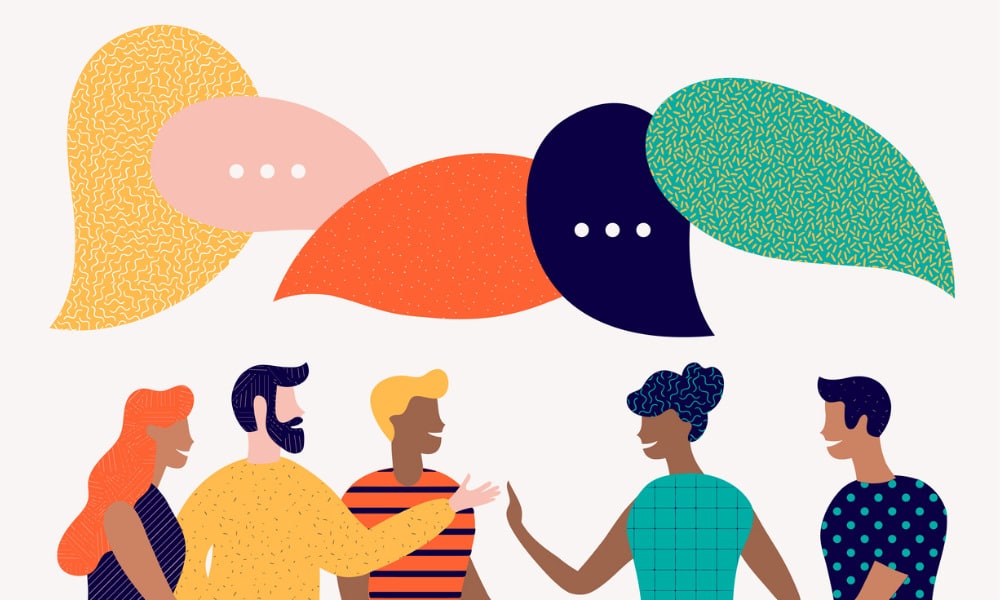As a Facilitator, experience has taught me that any word uttered is as important as how or in the manner it was uttered. The essence of incorporating Diversity and Inclusion in facilitation is to create an environment where all participants feel valued, respected, and included in group discussions and activities. As a facilitator, it’s important to recognize that every participant’s perspective and belief is valuable and to ensure that no one feels out of place or excluded hence being able to contribute effectively to the purpose of the facilitation.
Diversity enriches the training experience, fostering productivity and depth of learning. Consequently, I prioritize continually harnessing diversity, inclusion, and equity to enhance the facilitation process. With each training session, I discover new tools and activities that promote inclusivity and accommodate diverse perspectives.
To make this happen, I use a few different strategies.
Setting ground rules on communication
Ensuring the collective setting of clear ground rules or norms on how to communicate and collaborate during the training with some penalties for defaulting is key. These norms, grounded in Diversity, Equity, and Inclusion (DEI) principles, emphasize mutual respect, openness, empathy, and accountability. Additionally, creating space for all participants to contribute, regardless of whether their suggestion has been previously mentioned, fosters an inclusive atmosphere where everyone’s voice is valued. Encouraging participants to express their expectations and concerns openly by writing them down and posting them for everyone to see promotes cohesion, and trust among participants and sets a tone of transparency and inclusivity.
Sharing personal experiences
By sharing personal experiences of biases and overcoming them, participants are encouraged to reflect on their own biases and ensure they do not influence their interactions during the training. I normally will list some of the unconscious biases using myself as an example, like not wanting to relate with people outside of my organization or making assumptions about others during training; and how I was able to overcome them. The idea is to encourage the participants to identify their various personal unconscious biases and be able to hold them under control during the training and stop any behaviors that would make people feel left out or disrespected. Additionally, there is room for anonymous feedback which enables participants to voice observations and concerns without fear of judgment, further enhancing rapport and engagement.
Promote diversity of thought
Mixing up participants in group discussions and activities is essential to prevent cliques and promote diversity of thought. Utilizing numbered groupings to form diverse sub-groups ensures that participants interact with a range of perspectives and contribute to tasks effectively. This allows everyone to work with different people and encourages everyone to contribute their thoughts and ideas. People tend to sit with their friends. Hence, I give a set of 1-10 numbers and repeat with all participants, then group them based on the number they picked, to have diverse smaller sub-groups that I would easily assess to ensure everyone contributes to any tasks assigned. After sub-group deliberation and presentation to the whole house, each sub-group participant is encouraged to contribute something by asking ‘if there is another point aside from the ones written down as a group’.
Furthermore, actively encouraging contributions from all participants, regardless of their background or previous contributions, reinforces the principle that everyone’s ideas are valued equally. This is the main benefit in diversity and inclusion in facilitation. It’s the reason I ensure everyone gets to work with different people, at different activities not just their friends, and encourage everyone to share their thoughts, not just a few people. Everyone’s ideas must be treated the same, no matter who they are, and talk about lots of different kinds of differences, not just one.
Other ways to boost diversity and inclusion in facilitation
Besides these strategies, incorporating icebreakers, asking thoughtful questions, and leveraging humor can further promote inclusive learning and dialogue. This is because it makes people bring out their authentic selves and not be afraid of being themselves irrespective of whoever is there
By implementing these strategies, the facilitator creates an inclusive and diverse learning environment that promotes equity and ensures that all participants can contribute and learn from each other. Ultimately, the goal is to strive for a more inclusive workplace where everyone feels valued and respected.
Recommended Books:
Thrive: The Facilitator’s Guide to Radically Inclusive Meetings, 2nd ed. by Dr. Mark Smutny
The Skilled Facilitator: A Comprehensive Resource for Consultants, Facilitators, Managers, Trainers, and Coaches 3rd Edition by Roger M. Schwarz
Designing & Leading Life-Changing Workshops: Creating the Conditions for Transformation in Your Groups, Trainings, and Retreats– November 22, 2020, by Ken Nelson, David Ronka, Lesli Lang, Liz Korabek-Emerson & Jim White
Shiftbalance is dedicated to upholding the highest standards of diversity and inclusion in facilitation. See our Facilitation page for more details!










